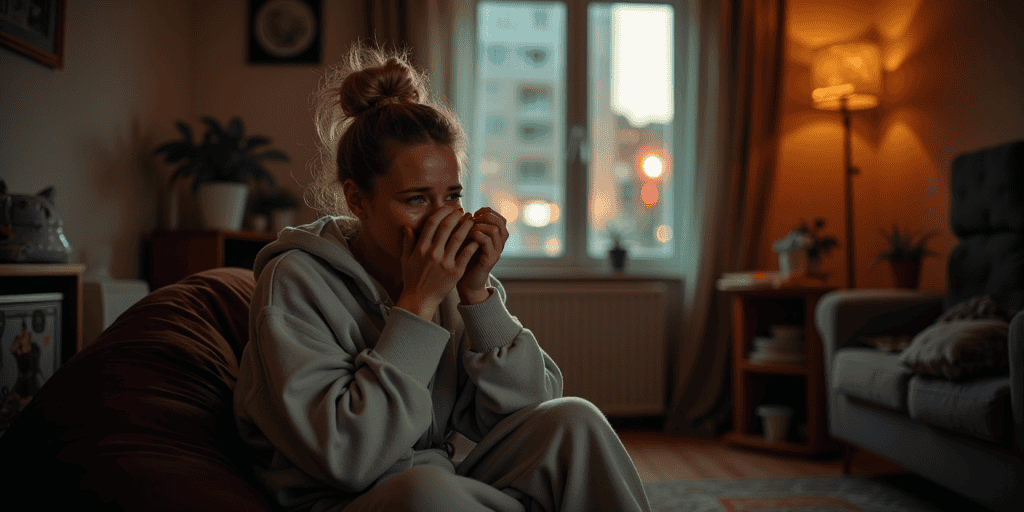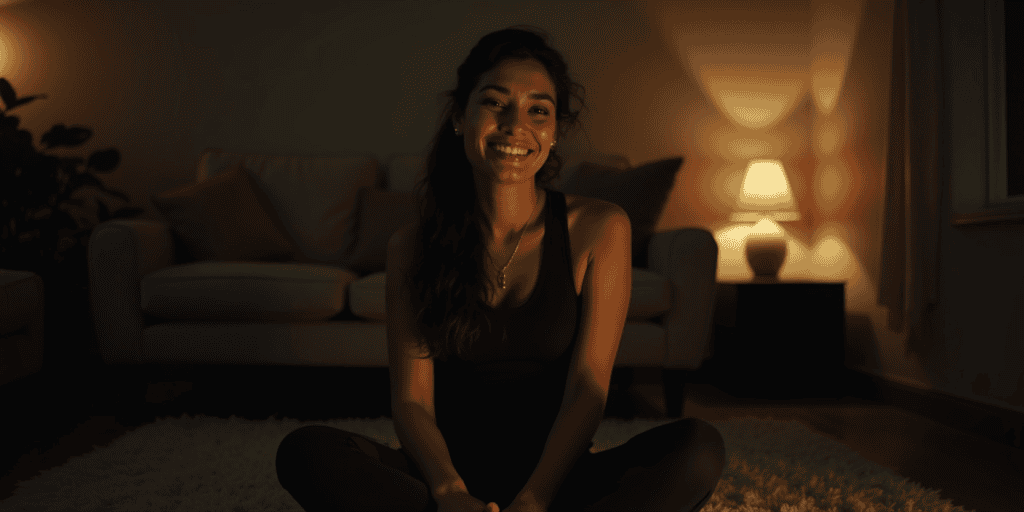I used to think healing meant moving on without looking back.
Smiling more. Forgiving faster. Acting like none of it touched me.
When I went no-contact with my narcissistic mother, the person who raised me to believe love was conditional, I thought the hardest part was over.
I told myself I was “fine” because I wasn’t crying every day anymore.
But deep down, I was still triggered, still stuck in survival mode, still pretending it didn’t hurt.
Many survivors convince themselves they’re healing when, in reality, they’re just managing the damages, not mending it.
It’s not their fault. Survival demands a mask long before real healing gives you your face back.
New research is finally revealing why so many of us misunderstand healing, and why true recovery feels worse before it feels better.
Table of Contents
What Survivors Think Healing Looks Like (And Why It’s a Lie)?

When you’ve spent years in narcissistic abuse, survival becomes your baseline.
I know because I lived there… smiling, suppressing, and doing everything to seem “fine.”
After I left my narcissistic ex, a man who loved love-bombing in public but emotionally starved me in private, I was desperate to be okay.
I slapped on a smile. I flooded Instagram with happy moments.
I honestly thought that’s what healing was.
If I could convince everyone I was happy, maybe I’d actually feel happy. Spoiler: I didn’t.
Here’s what I learned, painfully, about the lies we tell ourselves during fake healing:
Smiling and Pretending Everything’s Fine
I became an expert at this.
Every time someone asked, “How are you?” I replied, “I’m good!” even though my stomach was in knots.
I used smiles as shields. I was afraid that if I let my pain show, people would think I was stuck or broken.
But that fake peace didn’t heal me, it kept me disconnected from my truth.
Healing, I eventually realized, isn’t about smiling through the pain. It’s about facing it head-on.
Forcing Forgiveness Before You’re Ready

This was a tough lesson. I was told so many times, “You need to forgive your dad to move on.” So I tried. I forced it.
I said the words: “I forgive him.”
But inside, I still felt anger. I still felt abandonment.
Later, I learned that forced forgiveness only buries wounds deeper.
When forgiveness is rushed, it actually delays healing.
I stopped forcing it.
Forgiveness, if it ever comes, is something I now know will arrive when I’m truly ready.
Acting Like the Past “Doesn’t Affect You Anymore”
For years, I convinced myself I was “over it.” I even told friends, “Oh, that’s in the past. It doesn’t bother me anymore.”
But it did. I realized it when my boss gaslighted me and I froze.
When my friend ghosted me and I spiraled. The past wasn’t past. It was alive in my nervous system.
Pretending it didn’t affect me only kept me stuck.
If you’ve been faking healing just to feel “enough,” trust me, I get it. I did too.
That wasn’t weakness. That was survival.
“Suppressing emotional pain doesn’t make it disappear. It embeds trauma deeper into the nervous system.”
What Real Healing Actually Feels Like?

I used to think healing would be peaceful.
It’s not.
Healing, for me, was waking up in the middle of the night, angry because I remembered something I thought I’d forgotten.
It was having to say “no” and feeling terrified after.
It was crying so hard one day that I thought I’d never stop.
Real healing felt like falling apart, because I finally stopped holding myself together for other people.
Feeling Anger Without Guilt
For so long, I was terrified of anger. Especially my own.
I bit my tongue when my toxic sister minimized my trauma.
I smiled politely when my ex’s mother called me “too sensitive.”
But when I started letting myself feel angry, really feel it, something shifted.
My anger told me, “You deserved better.”
It wasn’t destructive. It was clarifying.
Grieving What You Lost (Even If No One Else Understands)

When I finally left my narcissistic ex, people said, “You should be happy now.”
I wasn’t. I was devastated. I missed the good moments. I missed the fantasy.
I missed the version of me who still believed love wouldn’t hurt.
Grief became part of my healing. I had to mourn the relationship, the childhood, and the dreams I lost, even when nobody else understood.
Setting Boundaries That Piss People Off
I remember the first time I told my brother, “No, I can’t lend you money.”
He lost it. Called me selfish. Guilt-tripped me hard.
I almost caved. But I didn’t.
Healing taught me that people don’t like when you stop abandoning yourself.
That’s their problem, not mine.
Losing People Who Benefited from Your Brokenness
This one broke me.
Friends who loved the “always available” version of me disappeared when I started saying no.
Even my aunt, who used to call daily, got cold when I stopped being her emotional sponge.
It was lonely at first. But over time, those losses made room for healthier connections.
Healing is messy, lonely, and often terrifying.
But every tear and boundary is proof that you are becoming whole again.
Why 98% of Narcissist Survivors Struggle (According to Research)?

I used to wonder why healing felt so hard.
I’d left my narcissistic ex, cut ties with my toxic mother, and even blocked the “friends” who only reached out to gossip or dump on me.
So why did I still feel stuck?
Why did I still wake up in panic sometimes, or freeze when someone gave me the silent treatment?
I thought something was wrong with me. I thought I was broken.
But I wasn’t broken, I was human. And research shows why this happens to so many of us.
According to a study, when people suppress emotions (like I did every day just to “keep the peace”), it actually leads to lower levels of support and satisfaction in life.
That hit hard.
I spent years swallowing my feelings just to avoid conflict. But that wasn’t healing, it was hiding.
Another study in Behavioral Sciences highlighted that trauma survivors like me desperately need social support to heal, yet often push people away or isolate themselves because vulnerability feels unsafe.
I did that too. I told myself I didn’t need anyone, but deep down, I did.
Research from Psychiatry and Clinical Neurosciences also explained that healing happens in stages.
First safety, then telling your story, then reconnecting.
But I skipped straight to pretending I was “okay.” No wonder I kept circling back to pain I hadn’t yet faced.
And when I read about the Women Recovering from Abuse Program (WRAP), something inside me clicked.
That study spoke about breaking trauma-based patterns… patterns I didn’t even realize I was repeating.
Like minimizing my abuse. Or blaming myself. Or numbing out to avoid feeling anything at all.
I saw myself in every single pattern:
- I minimized the abuse so I could “move on faster.”
- I blamed myself every time healing felt hard.
- I mistook numbing for healing.
Now I know… I wasn’t broken because healing felt awful. I wasn’t weak because I wasn’t “over it.”
I was finally doing it right.
Because real healing doesn’t feel good all the time… it feels honest.
And honest, raw healing? That’s the bravest thing any of us can ever choose.
How to Know You’re Truly Healing (Not Faking It)?

For the longest time, I thought healing would feel like happiness.
But when it finally started happening, it felt… quiet. Almost invisible.
I didn’t wake up one day glowing with joy or gratitude.
Instead, small shifts began to show up in my daily life. Subtle, but undeniable.
I wasn’t faking anymore. I was feeling. And that’s how I knew it was real.
You trust your gut instead of second-guessing everything
I used to question every single decision.
“Am I being too harsh?”
“Should I just let it go?”
“What if they get mad at me?”
I couldn’t hear my own voice because I was too busy seeking validation.
But slowly, I started listening to my instincts again.
When something felt off, I trusted myself, even if nobody else agreed.
That trust didn’t come overnight.
It came from proving to myself, over and over, that I could survive people’s disapproval and still be okay.
You stop defending your boundaries

Before, I couldn’t say no without explaining myself for twenty minutes.
I needed people to understand. I needed them to approve.
But real healing taught me that my boundaries are not debates. They are decisions.
Now, when I say no, I don’t feel guilty or rushed to justify. I say no… and that’s it.
You don’t chase closure from toxic people
I spent years hoping for apologies that never came.
I replayed conversations, wrote unsent letters, stalked social media… all for people who didn’t care about my healing.
Eventually, I realized closure wasn’t something they could give me.
It was something I had to give myself.
I stopped knocking on locked doors.
I turned inward, and that’s where I finally found peace.
You feel peace, not performative positivity

There was a time when I forced myself to be “positive.”
“Just focus on the good.”
“At least it’s over.”
But that wasn’t peace, it was pressure.
True peace came when I stopped performing.
When I gave myself permission to feel sad, angry, or tired.
Now, I don’t fake smiles to make others comfortable.
I sit quietly with myself, and that calm feels more healing than any forced affirmation ever did.
My Turning Point: When I Realized Healing Isn’t About Looking “Fine”

I remember the night it all shattered.
I had just blocked my narcissistic sister for the last time.
I was alone, surrounded by unpaid bills, old memories, and a soul that felt hollow.
I couldn’t pretend anymore. There was no audience. No performance.
I broke down. I sobbed until I couldn’t breathe. And in that moment, as raw and wrecked as I was, I finally stopped running.
I wasn’t healed yet. But I was healing.
Because healing, I now know, isn’t about looking fine.
It’s about letting yourself not be fine… and loving yourself anyway.
Final Thoughts
Healing isn’t a performance, it’s a rebellion.
A quiet, gritty, soul-level fight to reclaim your peace without pretending everything’s okay.
And if you’re here, nodding, wiping away that invisible tear, you’re already on the right track.
The truth is, most survivors confuse survival with healing. I did too.
That’s exactly why I created The Next Chapter, a step-by-step roadmap to help you stop managing damage and start rebuilding a life that feels free, real, and joyful again.
You don’t need to do this alone. You just need a path that actually makes sense.
Related Posts:
- Why The Anger Stage Is a Very Important Part of Healing From Narcissist Abuse?
- How To Stay Consistent In Your Healing After Narcissistic Abuse
- 5 Types of People You Need While Healing From Narcissistic Abuse
- 6 Phrases All Narcissistic Abuse Survivors Must Hear [What No One Tells You]
- 20 Affirmations For Narcissistic Abuse Survivors




